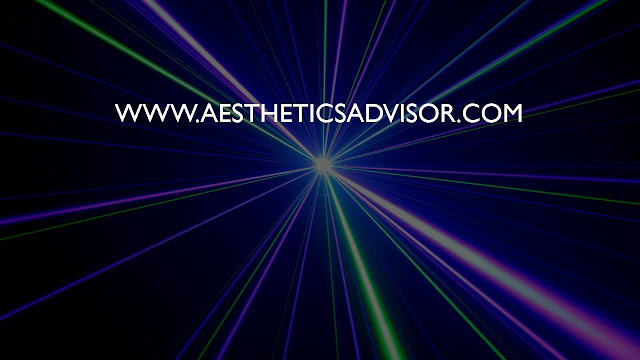Fotona 5D vs 4D vs Ultherapy (HIFU) vs Thermage: What Are the Differences?
If you are considering a non-surgical facelift treatment, you've come to the right place. The number of options for non-surgical facelifts have increased drastically in recent years, thus making it a struggle to decide which treatment would be best for you. This guide is here to help.
What is a Non-Surgical Facelift?
A non-surgical face-lift can include a number of different treatments and procedures that aim to address the effects of aging. Non-surgical options for facelifts fall into three categories: replenishing lost volume, resurfacing the superficial skin and tightening deeper tissue. Generally, a range of treatments are used in combination to achieve your overall facial rejuvenation goals.
There are 3 different categories of non-surgical face lifts that can achieve lifting without plastic surgery:
- Energy-based
- Filler-based
- Thread lift-based
The energy based category is the biggest group with various technologies and jargons, thus could be overwhelming and confusing for you as a consumer.
 |
| Different depths of penetration for different energy devices for non-surgical facelift |
There is no clear path suited to everyone because the procedures used will be dependent on your individual goals. Generally, a range of treatments are used in combination to achieve your overall facial rejuvenation goals.
We will cover the pros and cons of the popular non-surgical facelifts.
1. Fotona 4D Non-Surgical Facelift
Fotona 4D has 4 state of the art lasers that are each designed to enhance your complexion in a unique way. Each one can be adjusted to provide a precise degree of treatment to suit your needs.
Furthermore, they can be combined to achieve a facelift-like result with the added benefit of enhanced skin tone and texture. This fully customised experience can also help protect your skin from damage stemming from overly aggressive treatment.

Fotona 4D Laser Face Lifting indications:
- Skin laxity and tightening
- Lines
- Nasolabial fold
- Wrinkles
- Loss of volume
- Uneven tones and texture

Pros of Fotona 4D:
- More effective than Thermage.
- No needles or injections needed. Less invasive than threadlifts.
- Relatively cheaper than Ultherapy and Thermage.
- Not easily available. Not all aesthetic clinics or beauty salons will have this device.
2. Ultherapy (First Generation High Intensity Focused Ultrasound)
Ultherapy (HIFU treatment) delivers High Intensity Focused Ultrasound (HIFU) energy in a bullet-like manner to cause instant tightening of the Superficial Musculo Aponeurotic System (SMAS) layer of the face, stimulating collagen production without cutting the skin surface. The SMAS is the muscular layer that plastic surgeons pull and tighten in a surgical facelift procedure.
Ultherapy provides an instant and immediate lifting effect, followed by collagen stimulation over the next 3 months. Both effects are induced by the ultrasound energy. It's also very safe because the machine allows ultrasound visualization of the different structures and layers under the skin, allowing the operator to precisely target the right tissue - there's almost no chance of burns with this treatment.
Pros of Ultherapy:
- Instantly visible lift seen (forehead, eyebrows, cheeks, jowls, neck) with further improvement over 3 months.
- No needles or injections needed.
- FDA-cleared, non-invasive procedure that lifts and tightens the neck, chin and brow, and improves lines and wrinkles on the chest.
- Able to reduce the size of chubby cheeks.
- Treatment is pretty painful, although a pain score of 5 - 8/10 can be brought down to 1 - 2/10 with a nerve block.
- Efficacy of treatment is variable due to energy level and shot count having variations between different operators.
- Not suitable if you are thin-skinned and don’t have much fat on your face.
Pros of Thermage:
- Face-lift effect is subtle and gentle, recommended for younger patients between 25 - 40 years old.
- No needles or injections (ideal if you are fearful of injections but want some sort of facial rejuvenation).
- Thermage can’t lift moderately saggy tissues and skin in older patients. Not suitable for moderate to severe signs of facial aging.
- Chance of skin burns.
- Burning discomfort during treatment.
Dermal fillers have been used to fill facial depressions, skin folds and volume loss. It was recently discovered that they are extremely effective for face-lifting as well.
Common fillers used in Malaysia nowadays are:
- Juvederm, Restylane, Belotero, Teosyal (Hyaluronic Acid)
- Radiesse (Calcium Hydroxyapatite)
- Sculptra (Poly-L-Lactic acid)
- Ellanse (Polycaprolactone)
a. The Hairline Lift (originated by Dr Peter Huang, a renowned plastic surgeon of Taiwan) – tightening the sides of your face and jowls via fillers placed in your hairline as an anchor. This has an upward pulling force on all your facial muscles, similar to a surgical facelift effect.
b. Radiesse 3D Vector Lift - Injection of radiesse fillers like threads in vectors that will give a lifting effect.
c. The Butterfly Lift (originated by Dr Puttipong Poomsuwan of Bangkok) – lifting of the true retaining ligaments of the face. It's postulated that depositing the fillers right under those ligaments causes a pressure tenting effect on those ligaments, and thus skin tightening and a "lift" can be witnessed immediately.
- Instant visible lift seen (cheeks, jowls, smile lines). Good for last-minute lifting before big events.
- No downtime.
- Unable to lift moderate to severely saggy faces.
- Large volume of fillers (3 - 7 CCs) needed for full face treatment.
- Risk of a chubby-looking face or lumpy skin in inexperienced hands.
The popularity of threadlifts has increased considerably over the past few years. This is largely due to the desire to achieve face lifting without surgery.

Serdev Sutures® are often referred to as “thread lifts". This is incorrect, due to the different characteristics of both techniques. “Thread lifts” use “barbed threads”, which are not sutured, nor fixed, but free floating in subdermal fat tissue, while Serdev Sutures® use semi-elastic absorbable sutures, which are fixed to immobile skeletal structures.
- Instant visible lift seen which will further improve in 3-4 months (forehead, eyebrows, cheeks, jowls, smile lines, neck, double chin) .
- Most dramatic lifting effect among all the listed treatments.
- Versatile and suitable for all faces.
- Skill-Dependent – 8 out of 10 doctors who learn how to perform Korean thread-lifts eventually do not offer it.
- High chance of not having any results if not done properly.
- Downtime of 3 - 7 days (bruising, swelling, pain). This can be highly minimized in experienced hands. My patients have a downtime of 1 - 2 days.
- Chance of side effects in inexperienced hands (thread extrusion, thread migration).
- Many low-quality threads made in Korea have flooded the market (be careful of the cheap Korean threads which may have more side effects).
Radiofrequency devices like Thermage CPT and Exilis, radiofrequency works by heating the surface layers more so than the deep layers.
There is no way to deliver heat from the inside with a non-invasive radiofrequency device. Some RF devices try to cool the surface to make it more comfortable, but this also reduces effectiveness.
With the Starwalker VERSA3 and the Dynamis PIANO, however, long to ultra-long pulse laser beams selectively target deep skin layers to tighten fat and ligaments, whilst bypassing the surface skin layer (Journal of the Laser and Health Academy).
Fotona StarWalker® PQX is Fotona's picosecond laser technology and the newest addition to the highest performance StarWalker® laser family. One of the things that makes the innovative StarWalker® PQX laser system stand out from the competition is that it delivers highest Pico Power & Energy, which, combined with a wide range of sophisticated state-of-the art accessories, offers speed combined with precision in treatments.
Exilis vs Ultherapy
The main differences between Exilis and Ultherapy are the technologies used to carry out each treatment.Exilis uses both ultrasound and radio-frequency technology to eliminate fatty deposits, encourage collagen production, and reduce the appearance of fine lines and wrinkles.
On the other hand, Ultherapy only uses ultrasound technology, meaning that you will not experience quite the same range of results, such as fat reduction. Ultherapy is also not able to target deep wrinkles in the same way that Exilis does.
The differing levels of pain that each treatment causes is also sometimes enough to sway people towards Exilis over Ultherapy. Ultherapy is much more painful than Exilis, which can be quite a deterrent to those who are looking to have a large area of their body treated.
According to Introlift Medical Spa:
The most important key takeaway is that you should never attempt this procedure with a non-licensed provider as a way to save money. This could not only result in dangerous side effects, but you’ll likely be unhappy with the work and may have to get it done all over again.



.png)






Comments
Post a Comment